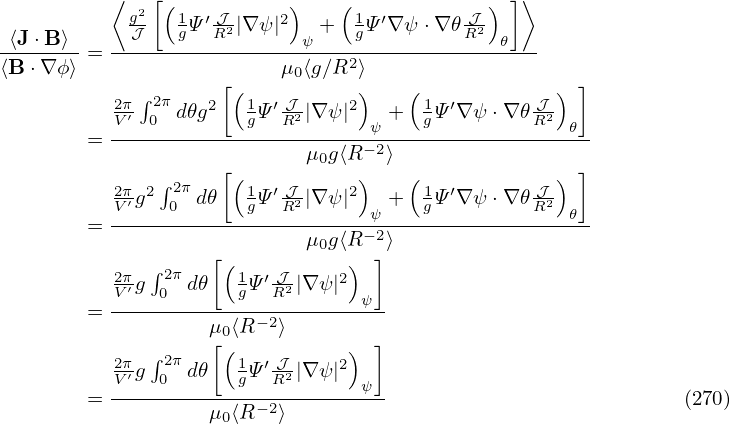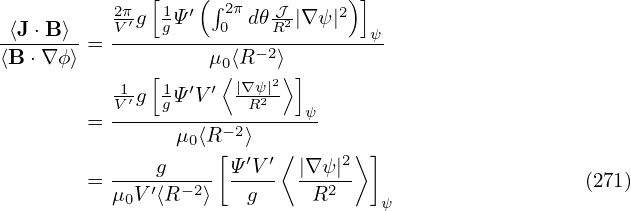
Next, we discuss a special poloidal angle, which is useful in describling a perturnbation of single harmonic (m,n). This poloidal angle is defined by
 | (276) |
where (m,n) are the mode numbers of the perturbation. The poloidal angle χ is often called helical angle and is special in that its definition is associated with a perturbation (the mode numbers of the perturbation appear in the definition) while the definition of the poloidal angles discussed previously only involve the equilibrium quantities.
The poloidal angle χ is designed to make 3D perturbations of the form ∼ f(ψ,m𝜃 −nζ) reduce to 2D perturbations, i.e.,
 | (277) |
It is ready to verify that the Jacobian of coordinates (ψ,χ,ζ) is equal to that of coordinates (ψ,𝜃,ζ) [proof: (𝒥′)−1 = ∇ψ ×∇χ ⋅∇ζ = ∇ψ ×∇(𝜃 − nζ∕m) ⋅∇ζ = ∇ψ ×∇𝜃 ⋅∇ζ = 𝒥−1].
The component of B along ∇χ direction (i.e., the covariant component) is written
At the resonant surface q = m∕n, equation (278) implies B(χ) = 0. The direction ∇χ defines the reconnecting component of the magnetic field?On the other hand, the component of B along ∇𝜃 direction is written
Using (279) and (278), the relation between B(𝜃) and B(χ) is written as
 | (280) |